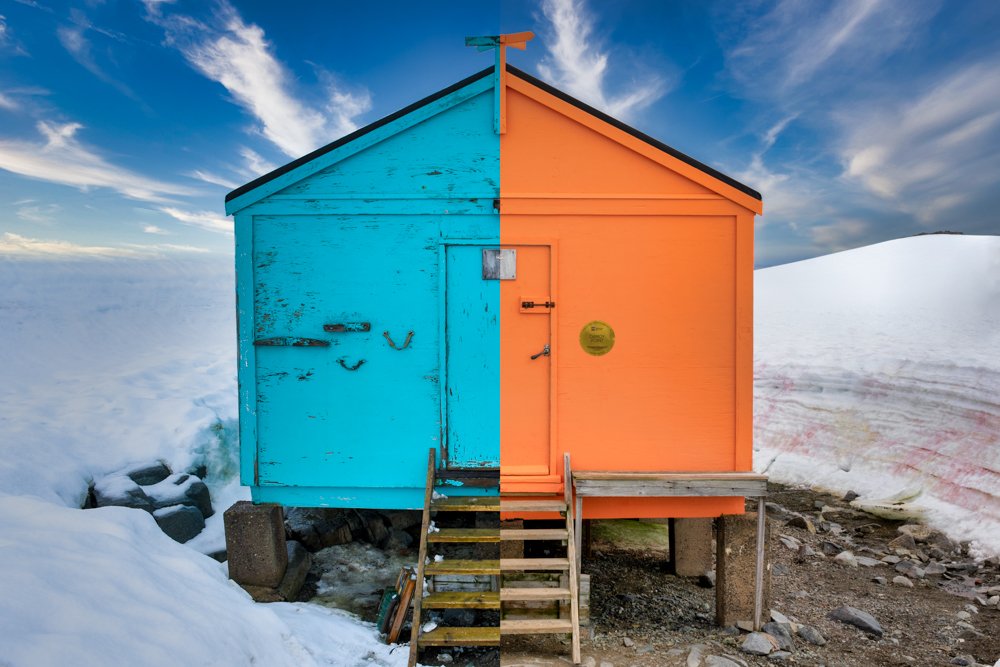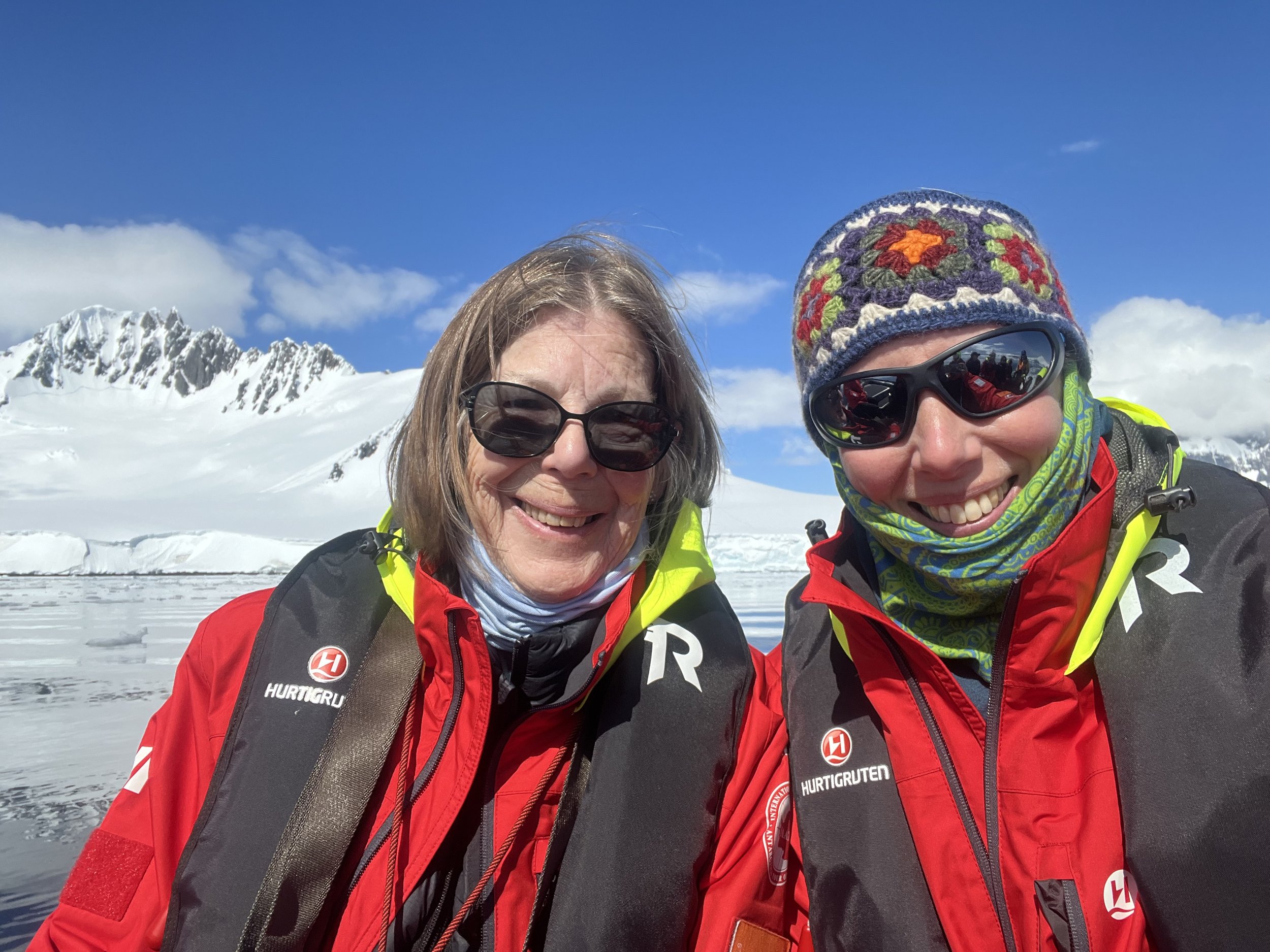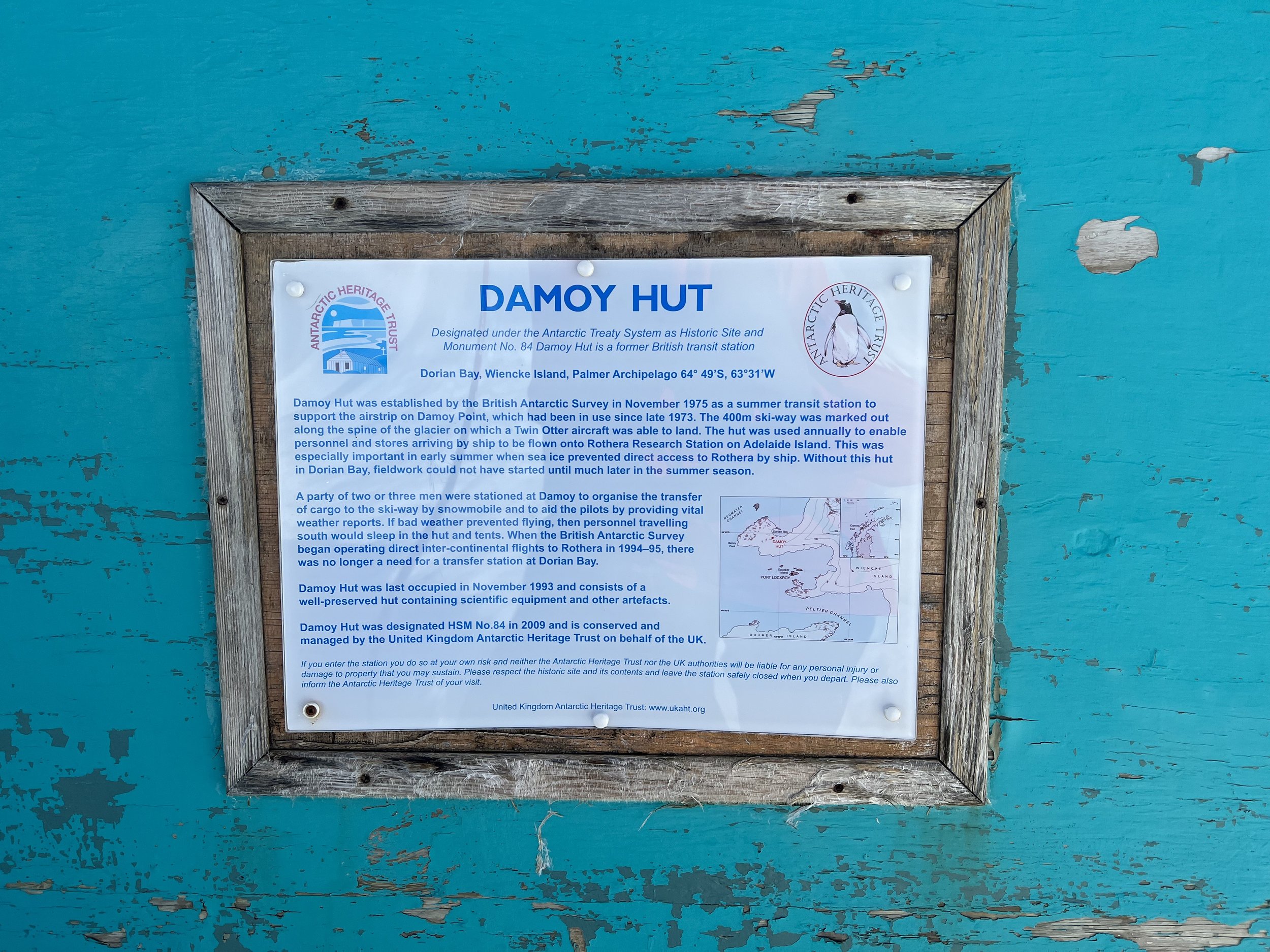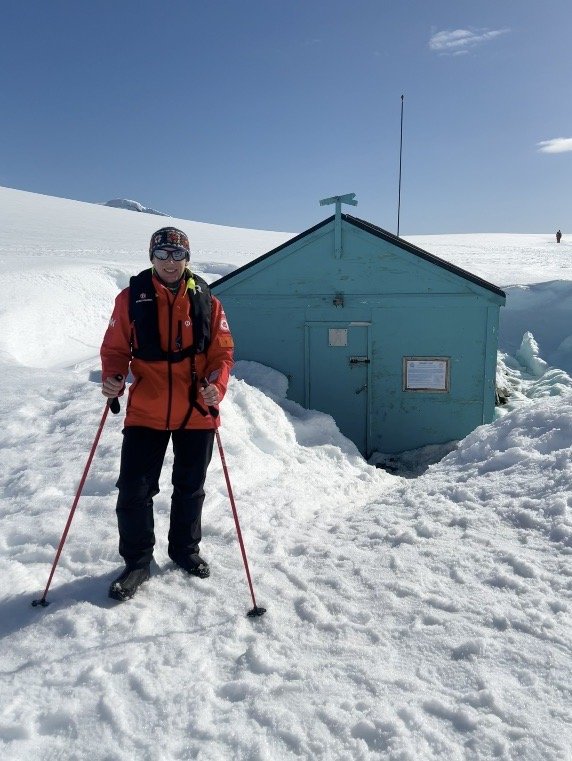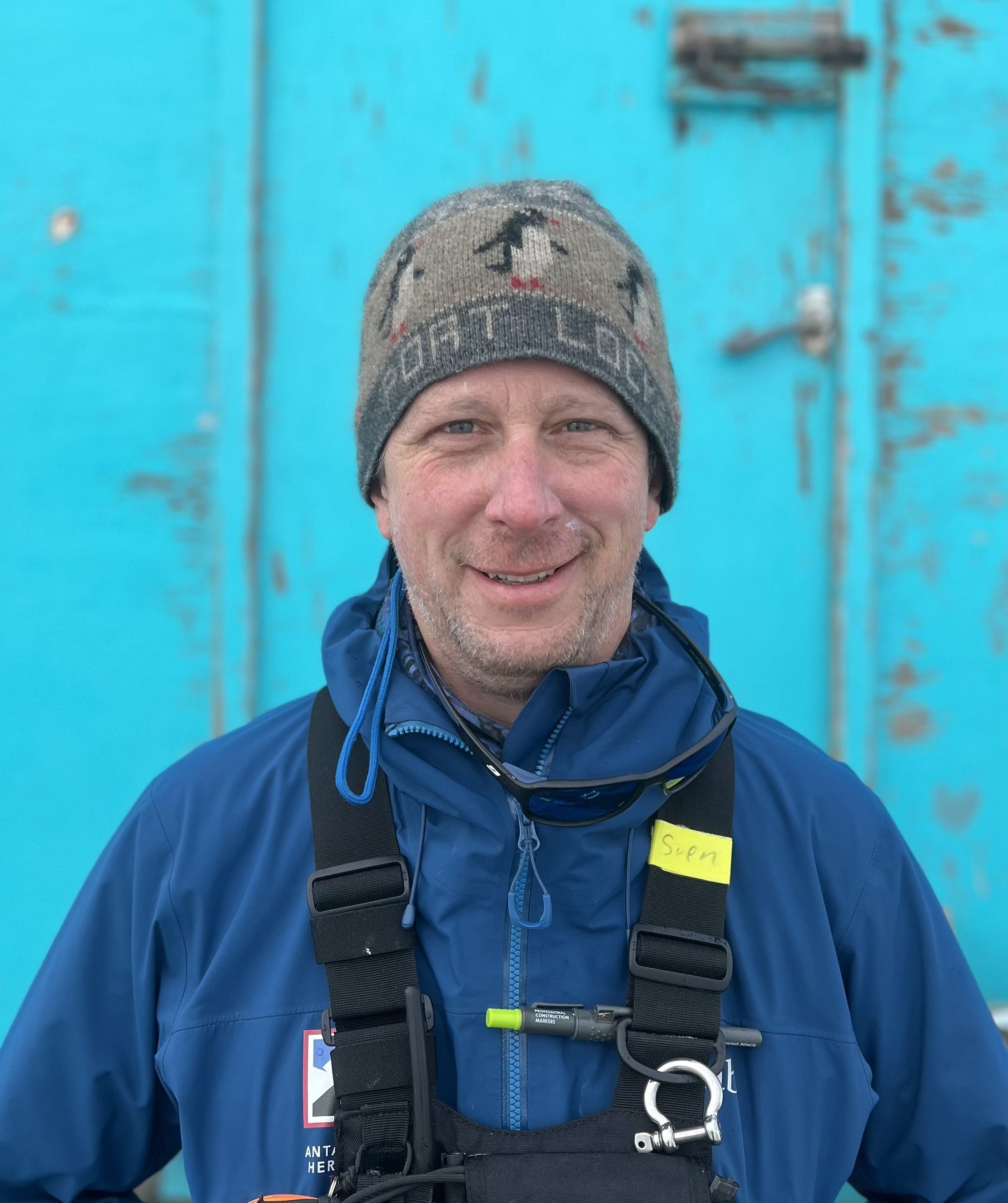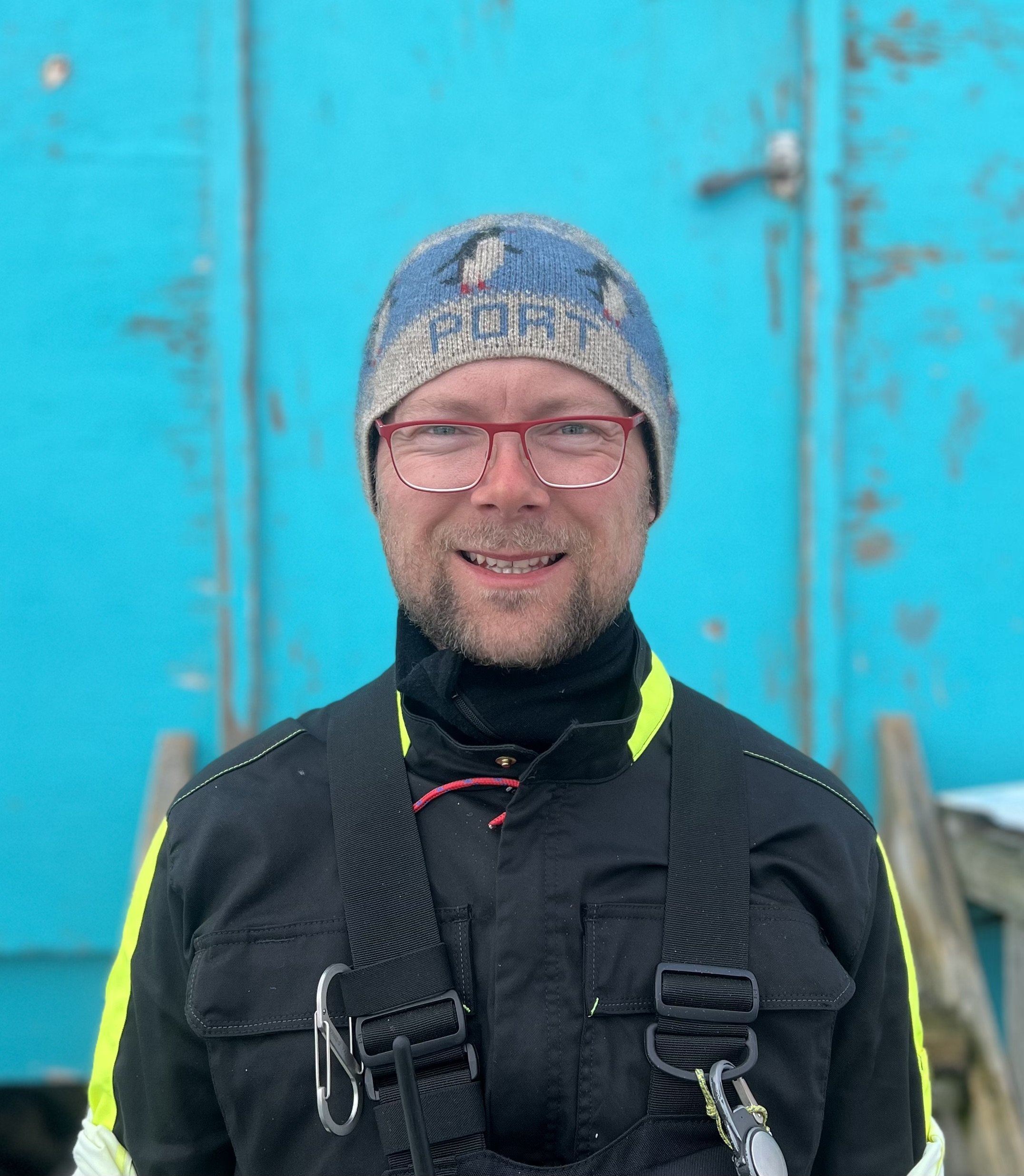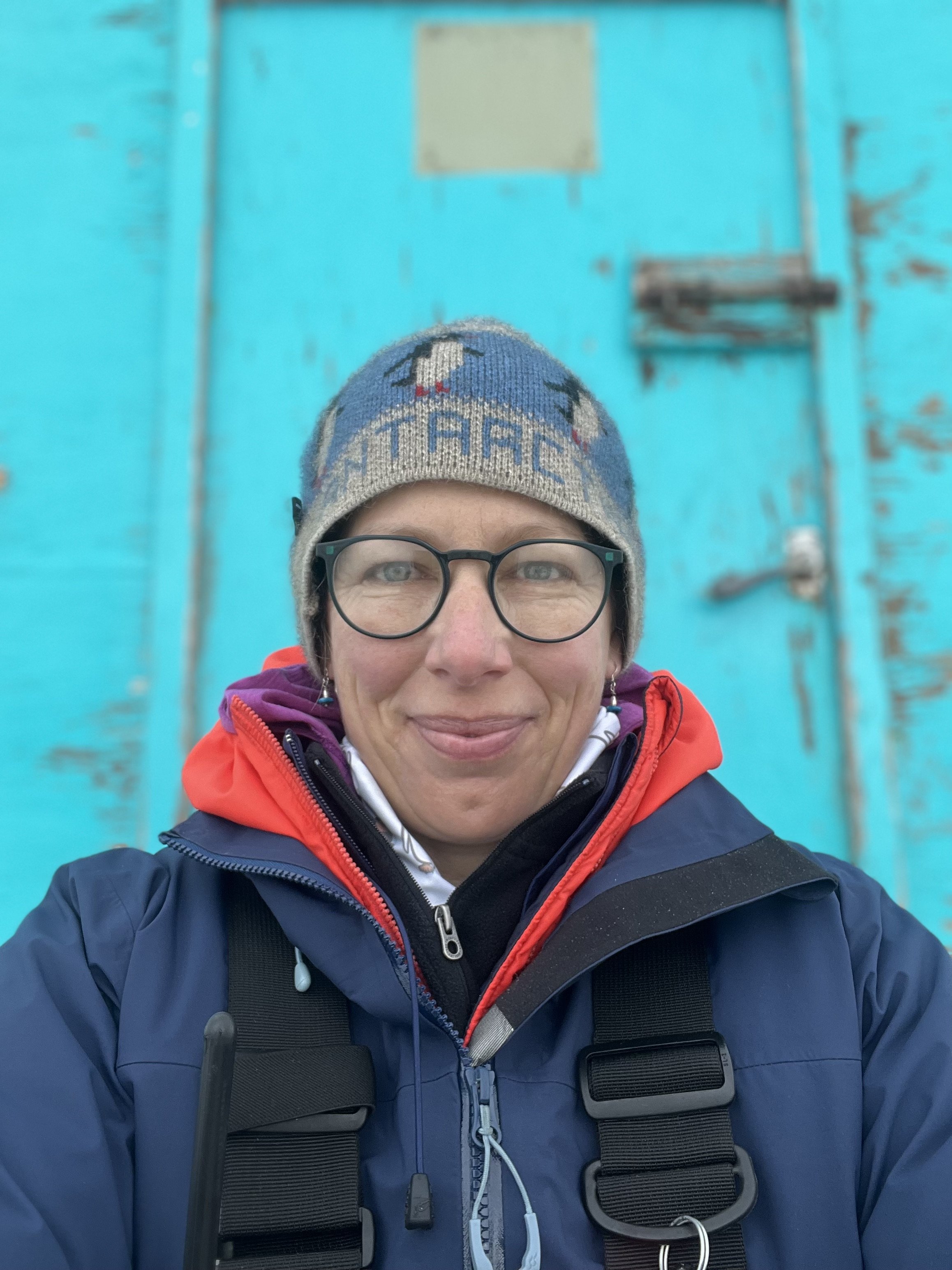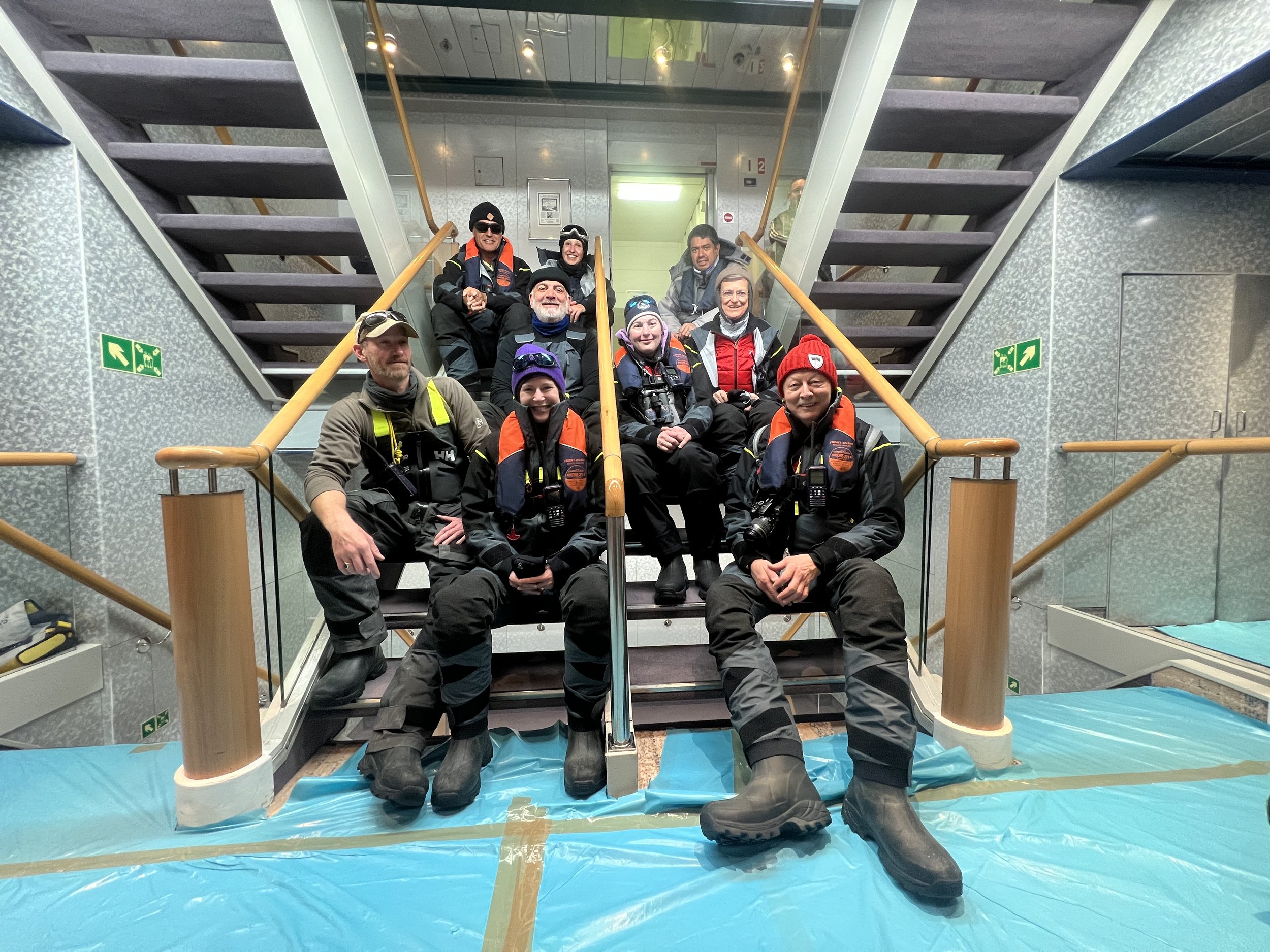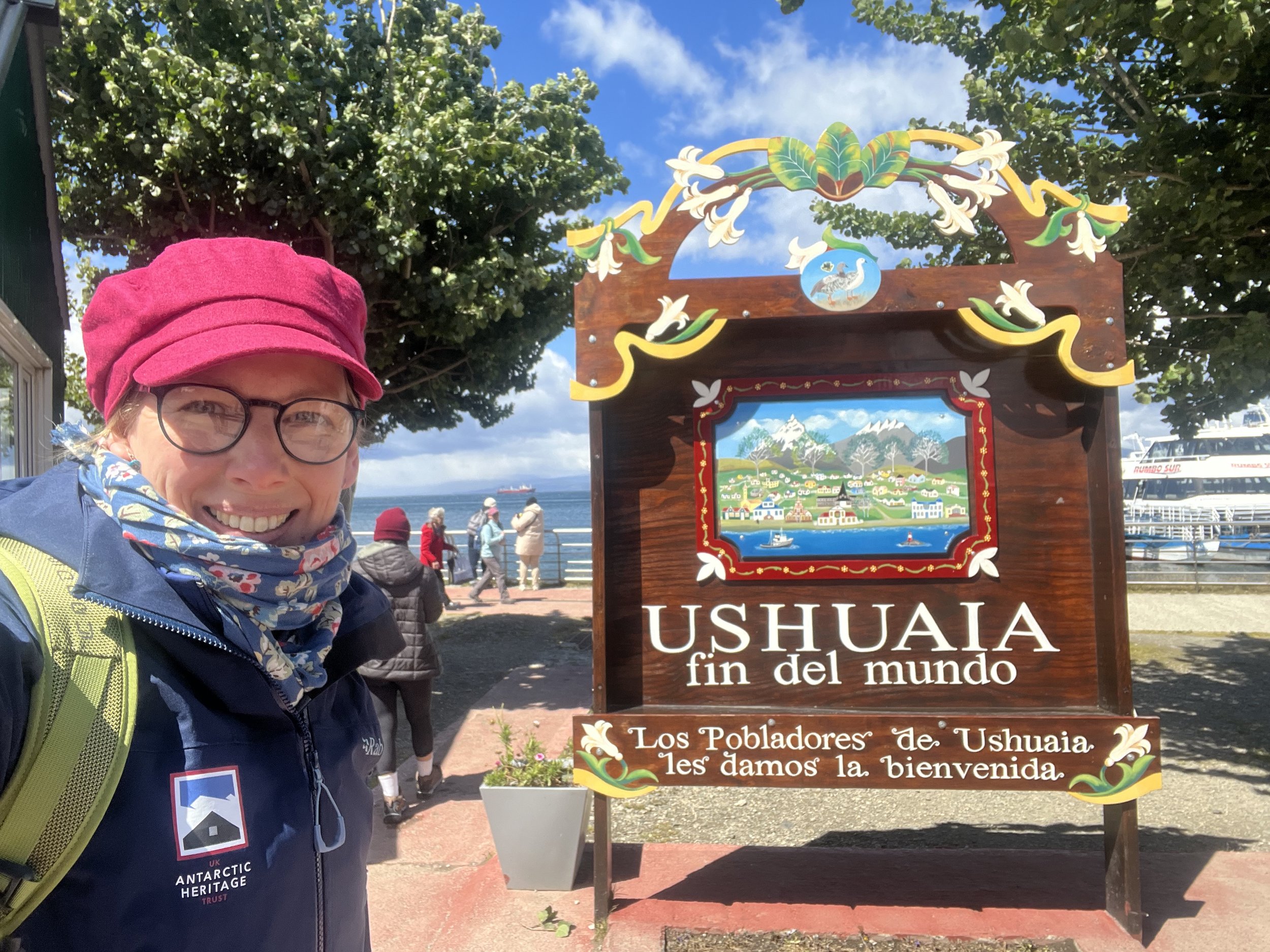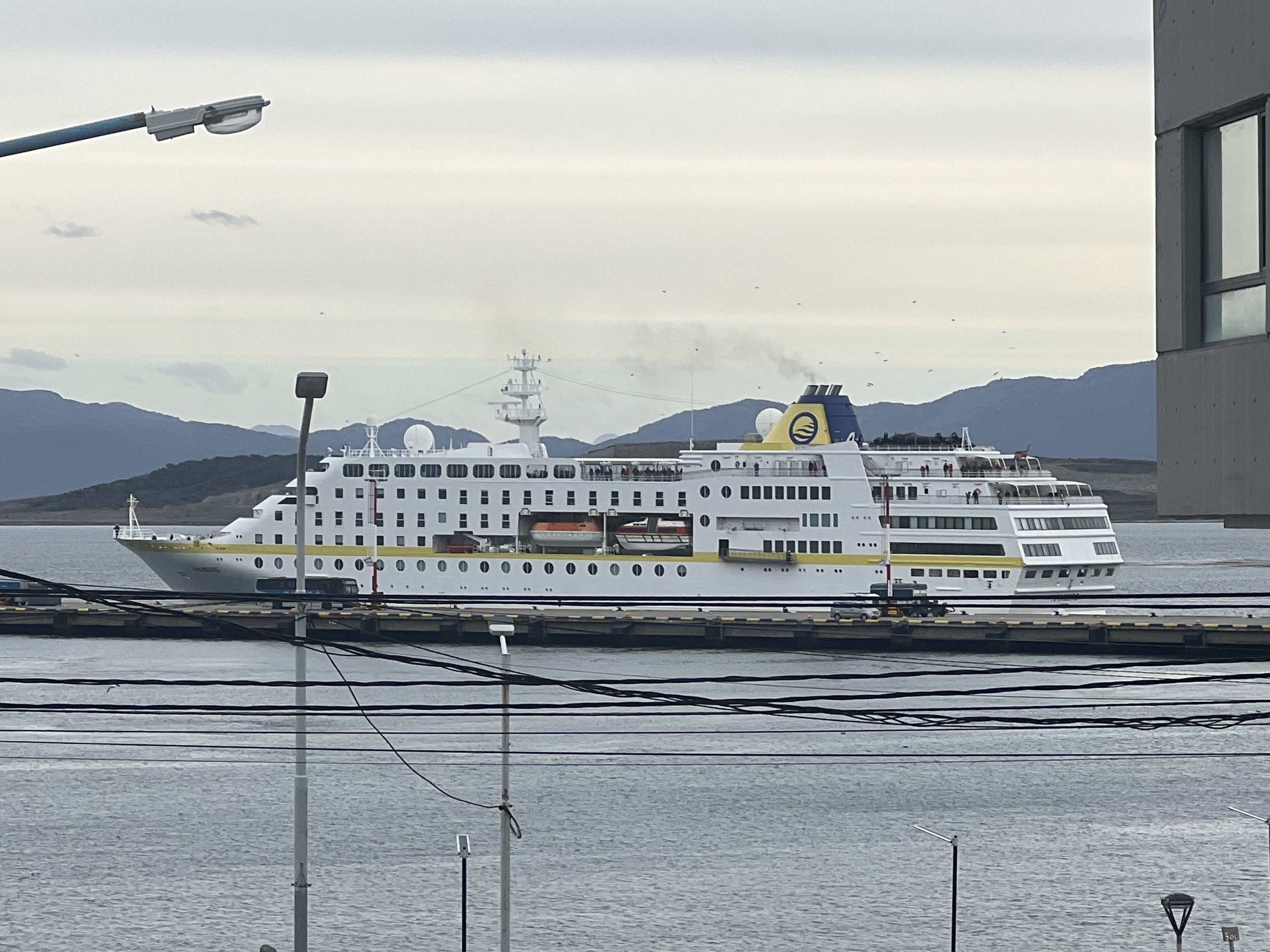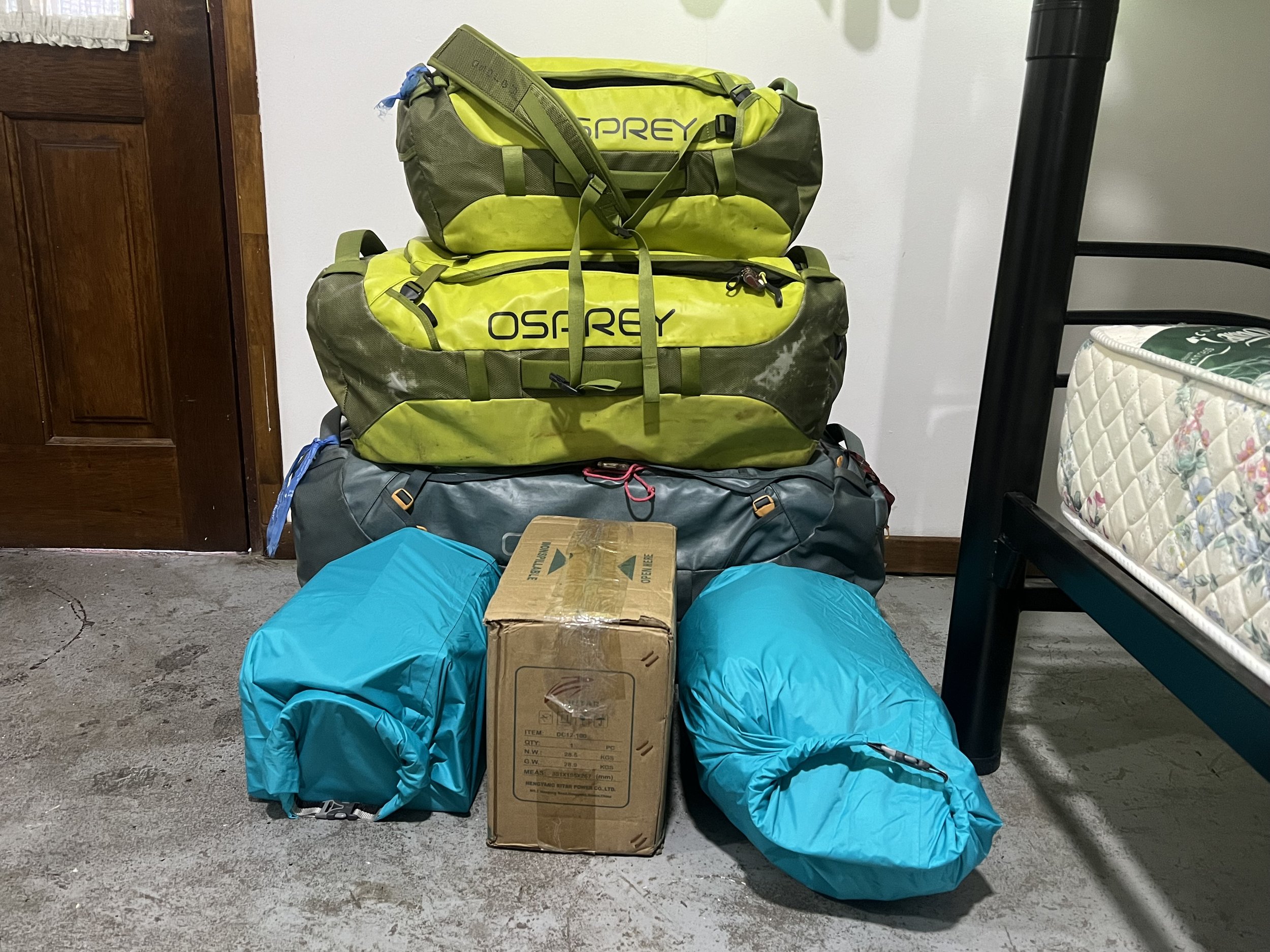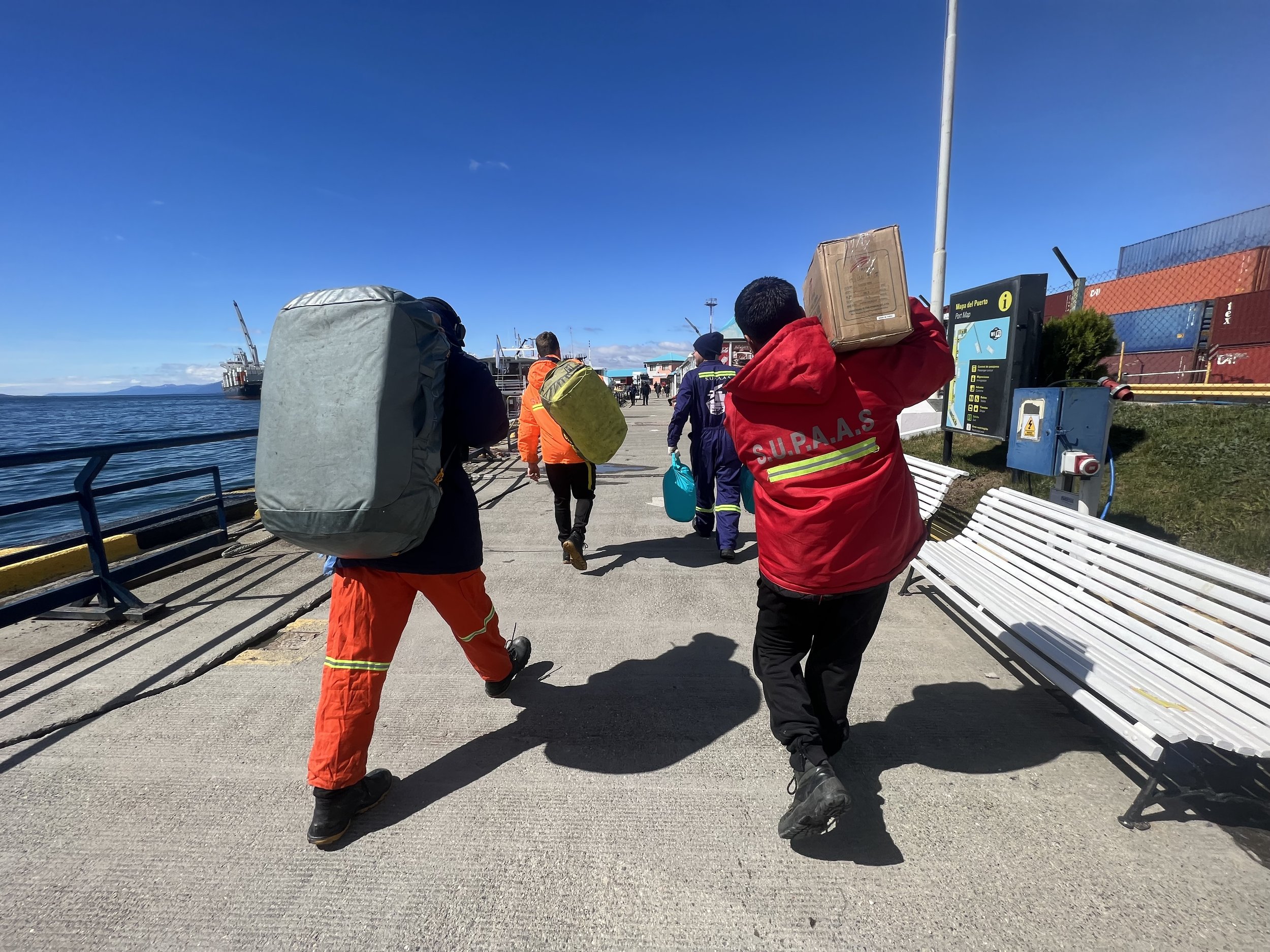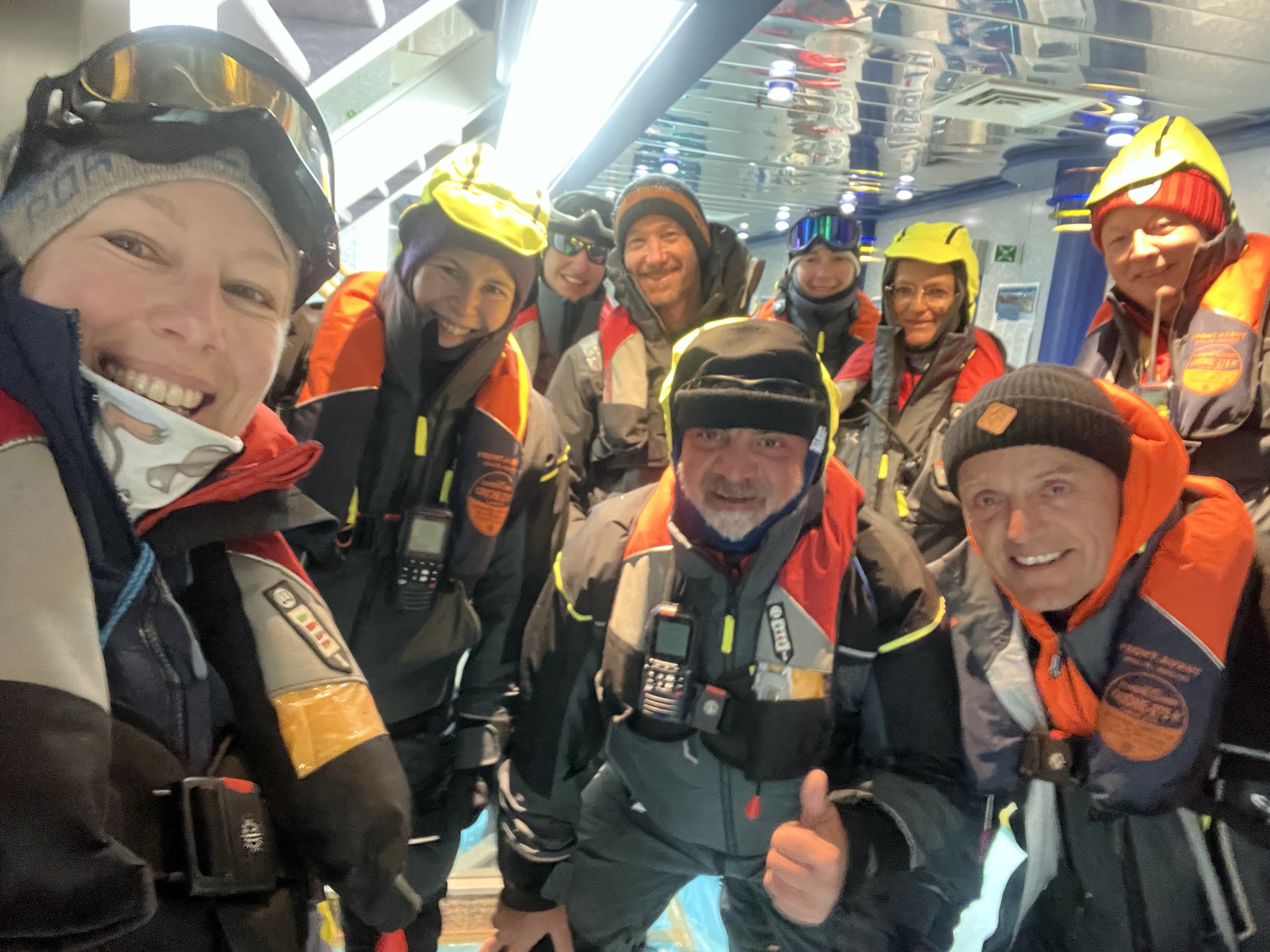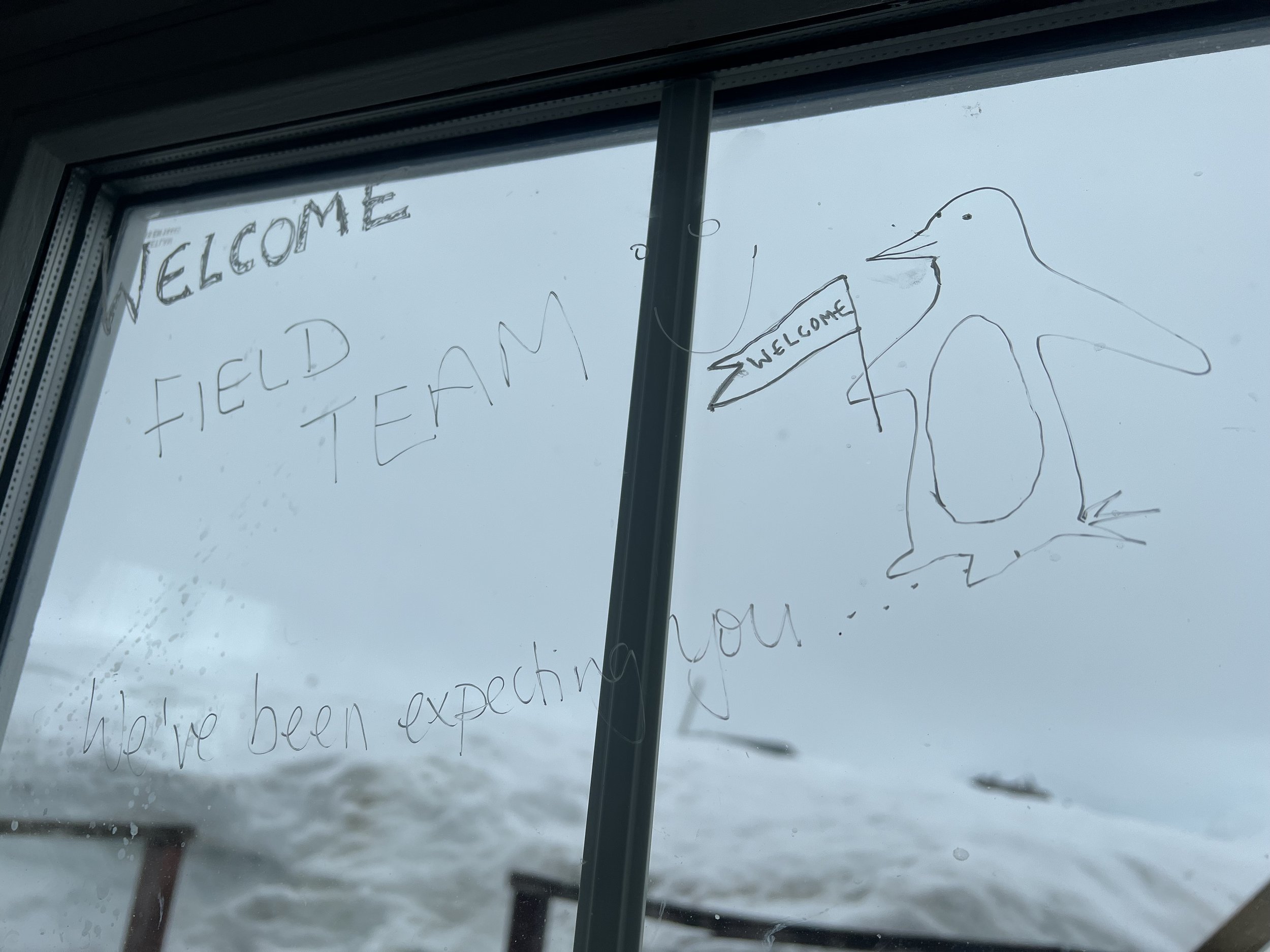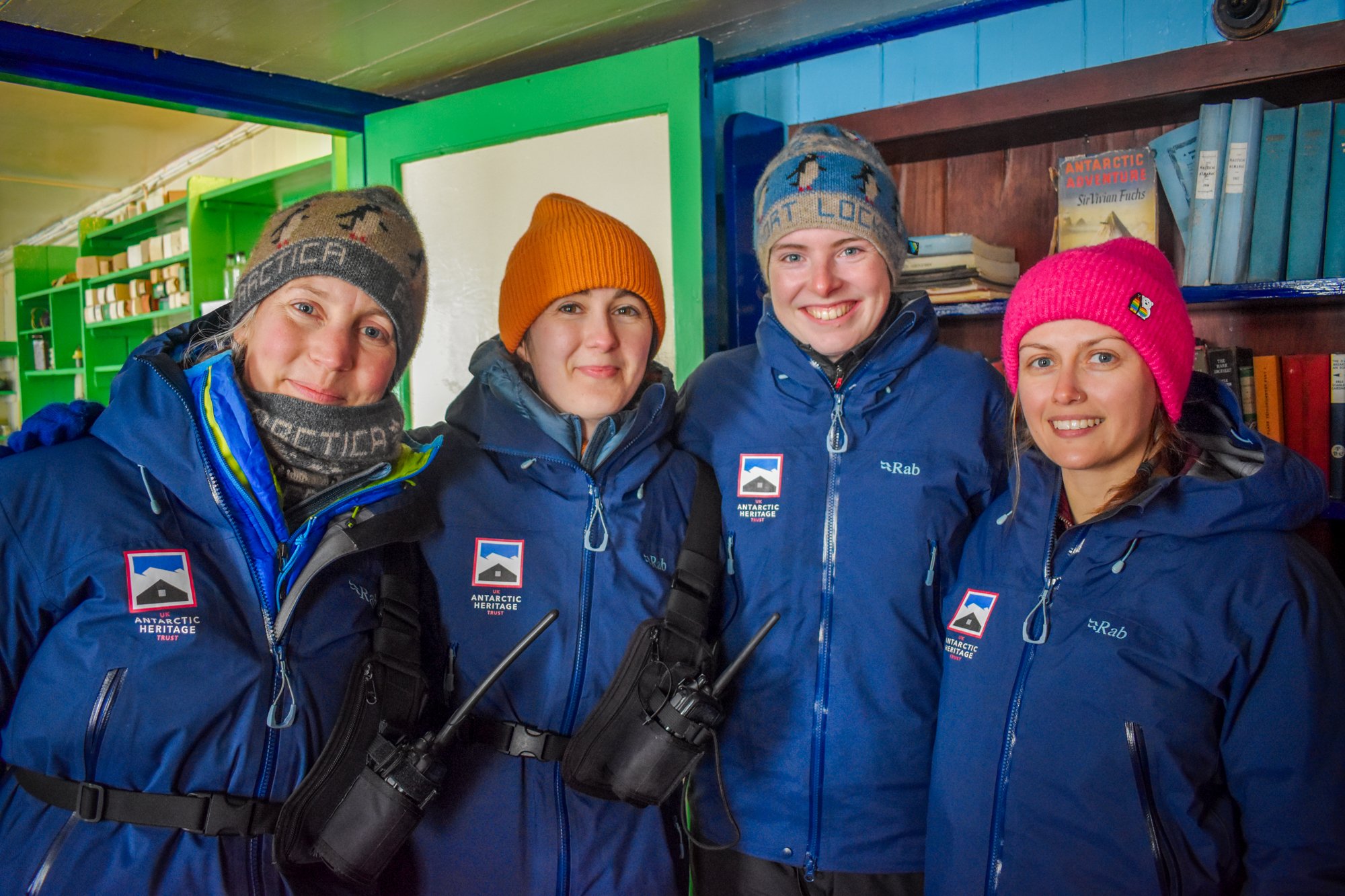A long commute to work – the what, the why and the how of my most bonkers job to date.
Imagine the scene…early December 2022 and I am on a Hurtigruten cruise with my Mum crossing the Drake Passage on the way to the Antarctic Peninsula when an email pops into my inbox highlighting a job opening for a Field Guide, working at heritage site Damoy Hut for UK Antarctic Heritage Trust on the Antarctic Peninsula starting 3 weeks later. I was intrigued by the job and was potentially available however had promised myself a quieter first couple of months at home, in the UK, sleeping in my own bed with not an airport in sight. All the best laid plans etc etc!
After a What’s App call with UKAHT just before we reached the peninsula to get a better idea about the job, I was told that we would be visiting Damoy Hut a few days later. It all seemed too good to be true but sometimes the stars align, and things are simply meant to be.
Roll on 2nd January and after only 10 days back in the UK after our cruise (which was amazing) and a whirl wind of reading, job training, kit gathering, seeing family and getting my act together I was standing at my front door at 2.30am waiting for a taxi to arrive with 50kg of kit and butterflies in my tum ready to head back down south and here is the what, the why and the how for my most bonkers job to date.
—————————————————————
The WHAT…my job title was that of Field Guide which usually means you are out and about guiding those you work with around parts of Antarctica, keeping them safe so that they can do their respective jobs. As we were to be based in one location and not moving very far from ‘home’ (base camp tent) and ‘work’ (Damoy Hut) I renamed the job ‘Field Camp Manager’ which was more apt for our particular project.
I would be working with Sven Habermann and Martin Herrmann, two heritage carpenters, and our project was to strip and repaint Damoy Hut, nicknamed the world’s most southerly waiting room. It was the only air transit facility on the peninsula, past and present, which allowed safe passage of British Antarctic Survey (BAS) personnel and equipment down to Rothera Station by air when the BAS ships could not get farther south due to dangerous sea ice. The hut was built in 1975 of a material called Structaply as a base for personnel to stay whilst they were waiting for a Twin Otter aircraft to land on the glacier above the hut for their onward travel. It has stood the test of time in extremely harsh weather and a damp environment since then but was in need of a good paint job and a few elements of the hut restoring in order for it to last another few decades and beyond.
From the UKAHT website - “On a rocky outcrop surrounded by penguins and calving glaciers is a small wooden hut known fondly by some as “the world’s most southerly waiting room”.
When the RRS John Biscoe arrived in 1975 to establish the base, Dorian Bay was chosen for its cargo storage area and skidoo friendly terrain. On 5 November, the prefabricated plywood insulated sheets were unloaded. By 14 November the band of amateur builders had built Damoy for shelter.
For many, this was where they made their first Antarctic landing by ship. “As a first landfall in Antarctica it was hard to beat,” enthuses Steve Garrett, geophysicist. “Surely a candidate for the most beautiful place on Earth.”
—————————————————————
The WHY…hopefully the above and below will answer Chris Grimes’ question from LinkedIn - What’s the story of Damoy Hut? Why is it there? What’s its purpose? And what did you go there to do?
We were involved in the most extreme DIY project that any of us had undertaken so far. Sven and Martin are both experienced in their trades however this was a project on steroids and we were all up for the challenge.
Taken from UKAHT website “The hut became redundant in 1993 and by 2007 the building was due for demolition. However, it was saved and preserved as “an excellent example of Antarctic logistics and early air operations in Antarctica” helping us to understand the operational challenges of working in Antarctica. It takes its place as Historic Site and Monument No. 84 – one of only 33 buildings, and the sole transit facility, on the continent protected by the Antarctic Treaty.”
“Under the care of UKAHT since 2009, today the modest hut is visited by more than 14,000 tourists each season. They look around rooms frozen in time containing everyday paraphernalia as if the men had just left on the last flight, take a walk up the slope to the airstrip location with views down to Port Lockroy and meet the local penguins.”
When the hut was built in 1975 it was painted a traditional orange which is highly visible to aircraft. Since then it has seen a few different colour variations from pink to green and most recently, in the 2009/2010 Antarctic summer season, it was repainted to a bright blue colour. Rather than stripping the paint off, previous coats had been put on top of what was already there and the paint was now peeling off so a thorough job was to be done, seeing us stripping off as much of the original layers of paint, hopefully back to the ply base, paint on an oil based primer then 4 or more coats of a specialist water based paint made by a Finnish brand called Tikkurila. The paint is designed to be used in extreme environments and was specifically colour matched to the original orange from 1975.
A few other conservation tasks were to be completed around and inside the hut to ensure its longevity however our Number 1 job was to complete the paint job and some paint job it was!
—————————————————————
The HOW…more of the ‘How’ of the actual job at hand in my next blog ‘Necessity is the Mother of all invention – 26 windy days and nights at the world’s most southerly waiting room’ so this How is how we travelled to this most bonkers of locations, with my first stop being Port Lockroy. Known as Base A and housed on Goudier Island in Port Lockroy, probably the most well known of all of the UKAHT 6 sites as it is the base of the museum, Post Office and shop, frequently visited by cruise ships, yachts as well as the Chilean Navy!
As mentioned at the start of my ramblings, I left my house in Salisbury at 2.30am on Monday 2nd January. ‘You off on holiday love?’ said my taxi driver. ‘Actually no, I’m off to Antarctica to repaint a hut’. A sentence which I never thought would pass my lips but here I was, with 3 weeks’ notice, heading back south again on an adventure which was the same same but very different to so many of my expeditions in cold places. At Heathrow I boarded a plane to Paris, then onto Buenos Aires with a short overnight stop in a local hotel before my final early morning flight down to Ushuaia, commonly known as Fin del mundo, the End of the World.
To say that I was a Space Cadet when I walked through arrivals in a very windy Ushuaia was an understatement and trying to have a conversation in Spanglish with my very interested taxi driver about what I was up to next was taxing my brain to the max. Arriving at Hostel Antarctica, all I wanted to do was to have a shower, eat and go to bed. Lugging my heavy bags into my room, the shower and food had to wait. I hit the pillow and that was it for the next 4 hours.
Having been to Ushuaia twice in December before and after the cruise, I knew my way around town in a basic fashion but with a few jobs to do before I boarded my next mode of transport farther south, I needed to get to know the town much better. I had a list from the team at Port Lockroy, where I was off to next, for cheesy puffs and olive oil, plus a heater for our mess tent and a few other goodies. It was great to go out for a walk, wind against me on my way to the large Carrefore I was heading for and blowing me back to the hostel on my return journey. Little did I realise then just how much the wind would feature in my time in Antarctica for good and rather more challenging reasons.
A couple of days later, well rested, well fed and repacked, I headed to the port to board the MS Hamburg for the last 6 days of my commute to work. As part of an agreement with IAATO (Independent Association of Antarctic Tour Operators), personnel on their way to work on the peninsula are offered free passage by cruise ships to their destinations and once I had found help moving my 50kgs of kit plus a car battery onto the ship, I was shown to my cabin and fell asleep again. Having been rather sick on the first day across the Drake Passage a month before, I had taken the prescribed 2 sea sickness tablets which promptly knocked me out.
We hunkered down at the end of the Beagle Channel overnight in order to wait out a storm and I am very pleased to report that our voyage across the Drake was a very calm one. A couple of days into our voyage we landed at Nico Island for the first of the passengers forays ashore. I was warmly welcomed by the Expedition Team on board and went ashore with them ahead of the passengers which meant I had a good long time to wander around. As with the weather in Ushuaia, the wind has a big impact on where ships can offer landings or whether we need to shelter in a bay to ride out a storm raging out in the channels or farther into the sea. My time on board, in between sleeping, eating, the gym and going ashore, was spent genning up on the myriad of operations documents including understanding the rules and regulations set by IAATO, protocols for doing gash (more about that in the next blog), how to call for help, dealing with seal bites (don’t get bitten by a seal), comms, logs and various spreadsheets, which I needed to read and try to understand. Unlike my usual expedition work, where we are on the move each day, this particular job was a fairly static one so getting my head around the daily workings of life on project took some time. It sounds counter intuitive as surely a static expedition is more logical than a journey but we had more equipment, more could go wrong and help was potentially farther away and with no wifi since I had boarded the ship until I would be on my homeward journey I was also well into a digital detox.
Wednesday 11th January, 9 days after leaving the UK and I am getting ready for my final Zodiac trip ashore, saying a fond farewell to the team on board the Hamburg as we get ready for a landing at Port Lockroy. It had been an incredible journey so far but more incredible things are to come.
When we landed I was met by Base Leader Lucy, one of Port Lockroy’s 22/23 season residents and base operators and soon met Natalie, Shop Manager; Clare, Postmaster and Mairi, Wildlife Monitor. My first duty of the day was to help out in the shop, serving my co-passengers from the Hamburg before they sailed away at lunchtime, it was great to get stuck into life at Port Lockroy, my home for the next 10 days. My Damoy co-pilots, Sven and Martin, were coming ashore that afternoon having spent the last 7 days heading south on the Silver Cloud. It was all starting to feel very real.
—————————————————————
Next up – ‘Prep time at Port Lockroy before necessity becomes the Mother of all invention – 26 windy days and nights at the world’s most southerly waiting room’
